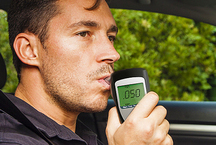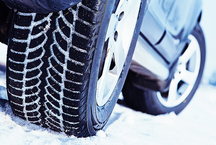Top 5 thickness gauges

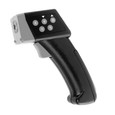
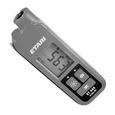
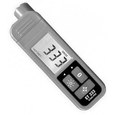

When buying a car in the secondary market, most often you have to believe the seller’s word, which says that his swallow is “not a bit, not a beautiful one”. In fact, in many cases it is not. Thickness gauge becomes the best helper in clearing cunning traders selling broken cars. We offer you a rating of the best thickness gauges for the paintwork, which will help you to check the car before you buy it.
The popularity of both the thickness gauges themselves and all kinds of offers such as "thickness gauge per hour" is only growing. This is not surprising: outwardly it is decent for a car to repaint an emergency car a lot; it will be difficult to “catch” something like this a few years later, when the paint burns out and fades away. However, even a new car that has just left the cabin may already be in the dealer's own body shop - damage during loading and unloading of an auto transporter and during transportation is also not uncommon.
Back in the nineties, it was possible to meet people using a conventional magnet wrapped in cloth or polyethylene in the car market: by the effort of moving and tearing, it was possible to find puttied places. Such a method was quite sufficient for detecting handicraft repairs, but the more possibilities the body builders have, the less material is applied in preparation for painting. We are not even talking about the complete replacement of body parts - here the difference in the thickness of the coatings is already one hundredths of a millimeter, and nothing can be done here with an ordinary magnet.
So, what does the market offer us now?
Types of thickness gauges
- Magnetic Thickness Gauges - Yes, yes, this is the development of the idea of the very magnet in a rag. Only the force of attraction is determined not by the fingers of the uncle in the worn cap, but by the spring and linear scale on mechanical models and the strain gauge on electronic ones. Naturally, such a device is useless on non-magnetic body panels, and if the high-chromium stainless still remains exotic (especially since the only example that came to mind, the DMC DeLorean, was not painted at all), then aluminum bodies are no longer a rarity.
- Eddy Current Thickness Gaugeson the contrary, they work better with aluminum than with steel - they measure the power of currents induced in the body, which depends not only on the gap between the metal and the inductor (that is, the thickness of the paint), but also on the conductivity of the metal itself.
- Electromagnetic Thickness Gauge re-focused exclusively on steel: they measure the magnetic flux density, which changes when approaching the sensor only magnetic alloys.
- Combined appliances most convenient - they can be used as an eddy current sensor for an aluminum body, and electromagnetic for a steel one, getting maximum accuracy in any case.
- Ultrasonic devices literally everything can: if all of the above needed metal, then the ultrasonic thickness gauge will be able to work quietly also on plastic parts. But the price for devices of high accuracy is appropriate, since at small thicknesses of the coating it is very difficult to achieve resolution in microns.
We will not consider mechanical thickness gauges: their accuracy is too low to be really used on something other than the Opel, which was beaten with time, with kilograms of putty from the 1990s. It is more logical to distinguish two categories - electromagnetic thickness gauges for cars with a steel body and universal devices of the combined type.Ultrasonic thickness gauges that are common for sale are too coarse: with an accuracy of 0.1 mm, the device will not distinguish neprokras from overflow of paint, and specialized industrial models are unnecessarily expensive, and they are not aimed at measuring the thickness of the paint.
Rating of the best thickness gauge in 2019
| Category | A place | Name | Rating | Price |
|---|---|---|---|---|
| The best electromagnetic thickness gauges | 1 | Etari ET-333 | 9.6 / 10 | 6 000 |
| The best combined thickness gauges | 1 | CEM DT-156 | 9.8 / 10 | 9 200 |
| 2 | UNI-T UT342 | 9.7 / 10 | 9 990 | |
| 3 | ET-444 | 9.6 / 10 | 7 400 | |
| 4 | ET-11P | 9.4 / 10 | 7 000 |
The best electromagnetic thickness gauges
|
Etari ET-333
6 000
The compact device is easy to wear, and it can get close to almost any part of the body - it’s not for nothing that devices of this class have become very popular. In the modern Etari lineup, this is the most popular thickness gauge of the electromagnetic series, preserving the layout of the ET-110 predecessor, but at the same time improving its characteristics: the display accuracy is 1 micron, the maximum error in normal conditions does not exceed 3%, the measurement speed is increased. On the measurement conditions, let's say right away: usually in advertising only the value is indicated for a smaller measurement limit and at a temperature closer to room temperature. But measurements on practically any electromagnetic or combined thickness gauge are coarser both in the cold and with a large thickness of the coating. To the credit of the manufacturer, the instruction says clearly: at a temperature of less than 18 degrees, the accuracy is reduced by no more than 0.1 / ˚С, that is, at -12˚С it will be 6%. For a 140 micron coating, the measurement spread will be 131 ... 148 microns: well, this is really enough if the painter did not care for all repainted parts with polish and thickness gauge. The device is extremely easy to use, so to get started, you do not need to delve into the instructions. The main thing - do not forget about the calibration: the kit for this is a steel washer and a reference 102 micron film layer. Main advantages:
Minuses:
|
 9.6 / 10
Rating
Reviews
For a long time I chose according to reviews which thickness gauge is better to buy for checking a car. Bought this one. Turned out to be a good car paint thickness gauge. Although my eye is full, but this thickness gauge has repeatedly caught tint and repaint, even after highly professional painters. |
The best combined thickness gauges
|
CEM DT-156
9 200
The compactness of the combined sensor is an indisputable advantage: it is very convenient for them to work on bends with a small radius, which worst fit (and, accordingly, will give out themselves faster than putty). The device can operate in two modes - point measurement and continuous, displaying in this case not only the current thickness value, but also the minimum / maximum and the average value during the measurement time. Results can be stored in one of 320 cells, for convenience, divided into four groups. The greatest accuracy of the thickness gauge is achieved when working with steel - 3% in 1 micron increments, the minimum radius of curvature of the surface is 1.5 mm. For aluminum, the accuracy is the same 3%, but in increments of one and a half microns, and the minimum radius of curvature is already 3 mm - the size of the vortex inductor surrounding the central electromagnetic sensor affects. To guarantee the maximum correctness of the measurement allows a regular set of five calibration plates of different thickness, while most of the sold devices have only one. The thickness gauge can be connected via USB to a computer for transmitting and processing information using standard software with which the disk is supplied with the device, although this function is unlikely to be used often by anyone. What did not like? The sensor is located at the bottom of the device, that is, when working with vertical surfaces of the wings and doors, you will have to keep the thickness gauge “away”, while the display turns upside down.Obviously, the manufacturer assumed that several measurements would be carried out first, and only then the owner would review them, but in fact it was not very convenient. Main advantages:
Minuses:
|
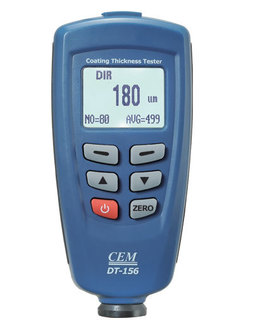 9.8 / 10
Rating
Reviews
The thickness gauge, with its price, is much better than most competitors, it keeps its calibration normally, it measures accurately. |
|
UNI-T UT342
9 990
The device can work on ferrous metals and non-ferrous alloys with decent accuracy - the error is stated at the level of 3% in the range from 55 microns to 1 mm, in the range of 0-55 microns it is fixed 3 microns. Work is possible in the mode of single measurements and continuously, and in this case UT342 automatically calculates the minimum and maximum thickness for the entire measurement session. Built-in memory is designed to save 2000 measurement results. This is quite enough to "search" the whole car from top to bottom. Like many thickness gauges of this class, the UT342 doesn’t like cold very much, so it’s better to work with it indoors and take it out for a short time outside. This will have a positive effect on the battery life - it uses a low-power "Krona", which does not have a high capacity. In the point measurements mode, the thickness gauge “sucks” it in 20 hours, with continuous measurement - even faster. Main advantages:
Minuses:
|
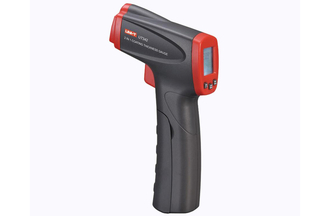 9.7 / 10
Rating
Reviews
The thickness gauge is good, accurate enough so that they can be confidently used to check the paintwork of the car. It is a pity that the plastic does not work. |
|
ET-444
7 400
The combined compact class meter is assembled in the same package as the electromagnetic ET-333, and is absolutely identical to it in application - it is enough just to rest the sensor on the surface for the measurement to begin. The device automatically starts in the electromagnetic mode and, without detecting steel, goes into eddy current.
If we consider that the addition of an eddy current sensor increased the price of the device by only 1,400 rubles, it is clearly more interesting than the 333rd model: the accuracy is the same, but the functionality is much richer. Main advantages:
Minuses:
|
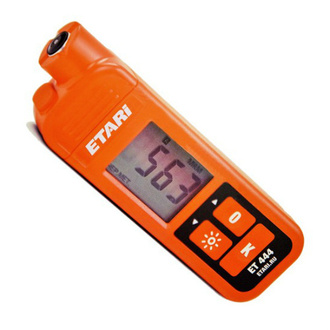 9.6 / 10
Rating
Reviews
I bought ET-444 to replace the outdated 110th, I chose the best thickness gauge from reviews on motorists forums. Satisfied. They removed an absolutely useless flashlight, but it became possible to work with aluminum. |
|
ET-11P
7 000
The manufacturer approached his business thoroughly: the set includes three calibration washers for instrument calibration. The first one is used to calibrate measurements on the magnetic metal, the second one - on non-ferrous alloys, the third one imitates the paint and varnish coating of the reference thickness. An absolute analogue both in construction and in price can be seen on the shelves under the label CHY-115 (both brands in Russia are represented by one company - EuroTrade). Also included with the thickness gauge is a reference table for the average thickness of paintwork on popular car models - a curious reading in and of itself, but we are interested in how accurately the device can measure real values. Here the declared accuracy is 3%, which is accepted for amateur equipment. In practice, when calibrated on a standard plate simulating a 102 micron paint, the readings of the device range from 104 to 100 microns: well, under ideal conditions, it fits into this accuracy with a margin. We especially note that the accuracy of the readings decreases slightly in the cold - it’s logical not to buy the car only in summer, is it logical? Also, in practice, he showed himself to be a convenient continuous measurement mode with audible indication - you can drive the device along the surface, watching the readings change, and you can adjust the maximum deviations and move without looking at the screen - when the measured thickness leaves the limits, a squeak will be heard. The pistol-type case seems convenient in theory, but in practice the design does not justify itself a bit - the fact is that when measuring the device it is necessary to rest with all the projections on the end part against the surface, otherwise the readings will be distorted. That is, in some places of risk - roundings on the edges of body panels, near the lanterns, and so on - it will be useless, you will have to catch the “tails” of the filler, passing on the plane of the elements. However, this problem is peculiar to many thickness gauges of the hammer type - a large area of the measuring area affects. Main advantages:
Minuses:
|
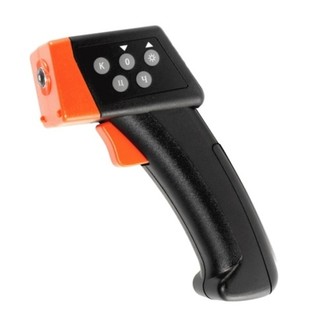 9.4 / 10
Rating
Reviews
The thickness gauge works well, but there is a nuance - it is necessary to carry out calibration with both plates, and then they start writing in reviews: they say, I do not measure aluminum. Instructions would be read first! |
So which thickness gauge is best to choose?
Having become interested in the thickness gauge market, we understood a paradoxical fact: there is really nothing to choose from. Noting the useless (with an accuracy of 0.1 mm) cheap models and too expensive ultrasonic meters of high accuracy, we found only a few decent brands, three of them actually turned out to be products of one factory: do you buy EuroTrade, Etari or the incomprehensible CHY, get the same. Many hammer gauges, for example, in practice turned out to be either modifications of the obsolete Etari ET-10, or more modern clones ET-11, differing only in color and name. Therefore, the recommendation would be:
- Do you need a compact thickness gauge lkp with enough accuracy to go through the car, chosen by yourself or friends? Look at the compact models of the electromagnetic or combined type: they will have enough accuracy, they do not take up much space, the price is acceptable, and using them cannot be simpler.
- Is the thickness gauge needed for professional practice (trade-in, painting)? Then the best choice would be a combined CEM DT-156 handheld device, because it is unlikely that you will inspect the car in the snow in either case. Kurkov's thickness gauges, not so long ago popular among dealers, are gradually losing ground - modern multifunctional devices are smaller and more functional, and the loss of manufacturers' interest in this form factor is clearly visible.
And finally, a wish - having chosen a good thickness gauge, do not go wrong with the machine!
